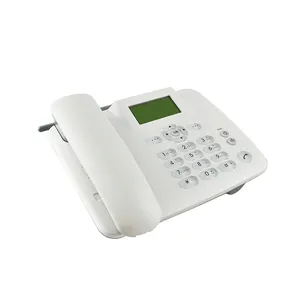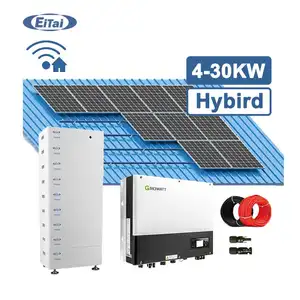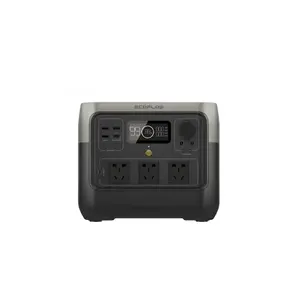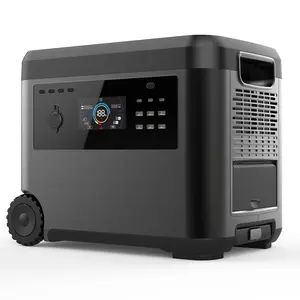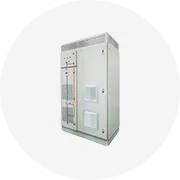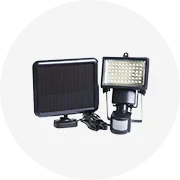الرائج في مجال عملك






قابلة للشحن ذات قدرة 12v 24v العميق دورة يبو البطارية الشمسية 100ah 200ah lifepo4 بطارية لتخزين الطاقة لأنظمة الطاقة الشمسية
٣٬٢٨٠٫٠٢ ر.س. - ٣٬٤٣٢٫٧٦ ر.س.
لمين: 1 قطعة


بطارية ليثيوم قابلة للتكديس 200 أمبير بالساعة 300 أمبير بالساعة بقدرة 48 فولت 100 أمبير بالساعة بطارية lifepo4 بقدرة 10 كيلو وات/ساعة 20 كيلو وات/ساعة نظام تخزين طاقة

٢٬٢٩١٫٠٥ ر.س. - ٢٬٧٣٠٫١٧ ر.س.
لمين: 2 قطعة
الشحن لكل قطعة: ٧٧٨٫٩٦ ر.س.







شيخو بطاريات ليثيوم ايون 3.2 فولت 330 امبير بالساعة 314 امبير بالساعة 306 امبير بالساعة 280 امبير بالساعة خلية ليفبو 4 لولبية بطارية خلية لتخزين الطاقة الشمسية
جاهز للشحن
٦٠٫٧٢ ر.س. - ٢٥٥٫٤٦ ر.س.
لمين: 4 قطع
الشحن لكل قطعة: ١١١٫٦٩ ر.س.







بطارية ليثيوم أيون على أحدث طراز 10 كيلو وات بالساعة 48 فولت 51.2 فولت 50 أمبير 100 أمبير بطارية ليثيوم 150 أمبير 200 أمبير 300 أمبير 400 أمبير بطارية Lifepo4 الشمسية
٤٬٥٨٢٫١٠ ر.س. - ٤٬٩٦٣٫٩٥ ر.س.
لمين: 1 قطعة

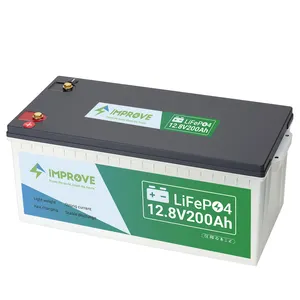





بطارية أيون الليثيوم 12V 100ah200ah300ah Lifepo4 بطارية حزمة بطارية ذاتية الشحن حزمة لأنظمة تخزين الطاقة الشمسية
٧٨٢٫٧٨ ر.س. - ٨٠١٫٨٧ ر.س.
لمين: 2 قطعة







بطارية Dyness B4850 48 فولت 48 فولت وحدة بطارية lifepo4 بجهد 48 فولت وحدة دورة 2.4 كيلو واط بجهد منخفض ليثيوم
١٬٣٧٤٫٦٣ ر.س. - ١٬٦٤١٫٩٢ ر.س.
لمين: 2 قطعة
الشحن لكل قطعة: ١٬١٢٦٫٤٤ ر.س.







بطارية Lifepo4 طويلة العمر 12 فولت 24 فولت 48 فولت 100 فولت 150 أمبير 200 أمبير 240 أمبير 300 أمبير حزمة بطاريات ليثيوم أيون منشورية 100 أمبير
٨٤٠٫٠٦ ر.س. - ٤٬٦٩٦٫٦٦ ر.س.
لمين: 1 قطعة






OEM بطارية ليثيوم أيون فوسفات شمسية 12 فولت 24 فولت 48 فولت 100 أمبير 120 أمبير 200 أمبير 240 أمبير حزمة بطارية LiFePO4
٤١٢٫٣٩ ر.س. - ٩٩٢٫٧٩ ر.س.
لمين: 10 قطع
الشحن لكل قطعة: ٢١٣٫٨٤ ر.س.






Sunpok Lifepo4 خلية خزانة Lifepo4 تخزين الطاقة الشمسية وحدة بطارية 10 كيلو وات 200 أمبير 48 فولت بطارية ليثيوم أيون
٥٬٧٠٠٫٢٥ ر.س. - ٦٬٤٠٠٫٤٣ ر.س.
لمين: 2 قطعة
الشحن لكل قطعة: ٦٢٬٨٥٤٫٩٥ ر.س.






48V 240Ah LiFePO4 عالية التفريغ بطارية أيون الليثيوم حزمة للمنزل نظام تخزين الطاقة الشمسية
٥٬٧٢٧٫٦٣ ر.س. - ٧٬٦٣٦٫٨٤ ر.س.
لمين: 3 حزم






سعة كبيرة 12v 20ah 240ah 250ah 48v 30ah lifepo4 60v 300amp ليثيوم أوراق بطارية حزمة
جاهز للشحن
١٢٩٫٨٣ ر.س. - ١٣٢٫٥٠ ر.س.
لمين: 1 قطعة
الشحن لكل قطعة: ١٥٠٫٣٧ ر.س.






Oem الصانع بطارية أيون الليثيوم حزمة 48v نظام ل الاتصالات 180ah 200ah 240ah Lifepo4 48v أسطواني/المنشورية
٧٢١٫٦٩ ر.س. - ١٬٢٥٦٫٢٦ ر.س.
لمين: 10 قطع
الأبحاث ذات الصلة:
48v 480ah lifepo4 حزمة بطارية12v 96ah lifepo4 حزمة البطارية12v 22ah lifepo4 حزمة البطارية12v60ah lifepo4 حزمة بطارية12 8v 8ah lifepo4 حزمة البطارية12v 8ah lifepo4 حزمة البطارية36v 8ah lifepo4 حزمة البطاريةّاكس v 8ah lifepo4 حزمة البطارية12v 21ah lifepo4 حزمة بطارية3.2v10ah lifepo4 حزمة البطارية12v 72ah lifepo4 حزمة البطارية24v 6ah lifepo4 حزمة بطارية12v 6ah lifepo4 حزمة البطاريةالمنتج v 5ah lifepo4 حزمة بطارية12v 140ah lifepo4 حزمة البطارية






CERRNSS OEM 12V 100ah 140ah 240ah Lifepo4 بطارية حزمة بطارية لتخزين الطاقة 12V 280Ah ليثيوم أيون فوسفات
٤٥٨٫٢١ ر.س. - ٥٧٢٫٧٧ ر.س.
لمين: 2 قطعة
الشحن لكل قطعة: ٥١٥٫٤٩ ر.س.






الأكثر مبيعًا بطارية ليثيوم فوسفات Lifepo4 قابلة لإعادة الشحن بجهد 228ah 230 أمبير/ساعة 240 أمبير/ساعة بطاريات شمسية مركبة بجهد 12 فولت 24 فولت 48 فولت
٧٨٫٦٦ ر.س. - ٢٢١٫٤٧ ر.س.
لمين: 2 قطعة
الشحن لكل قطعة: ١٤٣٫٤٢ ر.س.






OEM دورة عميقة 12.8V 25.6V 36V 48V 200AH 240AH lifepo4 بطارية حزمة بطاريات للتخزين للحصول على طاقة احتياطية RV قارب MPPT الشمسية AGV
٢٬٢٨٧٫٢٤ ر.س. - ٢٬٥٤٣٫٠٧ ر.س.
لمين: 2 حزمة






بطارية ليثيوم أيون 200 أمبير في الساعة طراز LiFePO4 BMS بطارية 12 فولت 48 فولت 100 أمبير في الساعة 150 أمبير في الساعة 200 أمبير في الساعة بطارية 12 فولت
٤٠٠٫٩٤ ر.س. - ٥٧٢٫٧٧ ر.س.
لمين: 10 قطع
الشحن لكل قطعة: ٤٣٧٫٧٥ ر.س.






ELFBULB الكل في واحد تخصيص بطارية lto 48V 100Ah 5kwh lifepo4 بطارية العاكس مع البطارية
٩٨١٫٣٤ ر.س. - ١٬٠٢٣٫٣٤ ر.س.
لمين: 5 واطات






بطارية IP67 LFP 48v 100AH Lifepo4, بطارية IP67 LFP 48V 100AH Lifepo4 بطارية 48V الذكية BMS APP 51.2v 105Ah حزمة البطارية لبطارية V
٤١١٫٨٦ ر.س. - ٤٢٬٢١٨٫١٣ ر.س.
لمين: 2 قطعة






بطاريات ليثيوم أيون 4 حزمة بطارية Lifepo4 48 فولت فوسفات الحديد 48 فولت 30 أمبير/ساعة لـ OS/Agv/رافعة شوكية/Ev
جاهز للشحن
٩٧٣٫٧٠ ر.س. - ٧٬٠٢٥٫٨٩ ر.س.
لمين: 2 قطعة
الشحن لكل قطعة: ٦٤٩٫١٤ ر.س.






OEM 18650 12v 24v 36v 48v 60v 72v 7ah 10ah 12ah 18ah 20ah 30ah 40ah 50ah 60ah 70ah 80ah lifepo4 صندوق بطارية ليثيوم أيون
٣٦٫٢٨ ر.س. - ٥٦٥٫١٣ ر.س.
لمين: 1 قطعة






بطارية Lfp رخيصة الدرجة بجهد 100 أمبير/ساعة 102 أمبير/ساعة بجهد 326.4Wh خلية Lifepo4 منشورية للطاقة الشمسية بجهد 12 فولت 24 فولت 48 فولت
جاهز للشحن
٨٧٫٨٣ ر.س.
لمين: 4 قطع
الشحن لكل قطعة: ٨٢٫١٠ ر.س.






بطارية Lifepo4 طويلة العمر 12 فولت 24 فولت 48 فولت 100 فولت 150 أمبير 200 أمبير 240 أمبير 300 أمبير حزمة بطاريات ليثيوم أيون منشورية 100 أمبير
١٬٤٣١٫٩١ ر.س. - ١٬٧١٨٫٢٩ ر.س.
لمين: 2 قطعة
الشحن لكل قطعة: ٣٩٧٫١٢ ر.س.





بطارية 12 فولت 24 فولت 48 فولت, بطارية CATL 228AH 230Ah 240AH 3.2V LiFePO4 فوسفات خلية قابلة لإعادة الشحن بطارية الطاقة الشمسية 12 فولت 24 فولت 48 فولت
٣٠١٫٦٦ ر.س. - ٣٣٦٫٠٣ ر.س.
لمين: 4 قطع






بطارية Lifepo4 طويلة العمر 12 فولت 24 فولت 48 فولت 100 فولت 150 أمبير 200 أمبير 240 أمبير 300 أمبير حزمة بطاريات ليثيوم أيون منشورية 100 أمبير
٨٤٠٫٠٦ ر.س. - ٤٬٦٩٦٫٦٦ ر.س.
لمين: 2 قطعة






مجموعة بطارية Lifepo4 بنظام الدورة العميقة 48 فولت 200 أمبير 230 أمبير 240 أمبير 250 أمبير 280 أمبير 48 فولت لنظام الطاقة الشمسية بطارية ليثيوم أيون 48 فولت
٣٬٠٤٧٫١٠ ر.س. - ٤٬٩٢١٫٩٤ ر.س.
لمين: 2 قطعة
الشحن لكل قطعة: ٣٬٢١٥٫١١ ر.س.






حزمة بطارية Lifepo4 الشمسية 12 فولت 24 فولت 48 فولت 300 أمبير لتخزين الطاقة المنزلية ، 100 فولت 200 أمبير مع طاقة مثبتة على الحائط
جاهز للشحن
٧٢٥٫٥٠ ر.س. - ٨٤٠٫٠٦ ر.س.
لمين: 1 قطعة
الشحن لكل قطعة: ٨٧٫٩٨ ر.س.





وحدة بطارية LiFePO4 4S 8S 10S 16S 12V 24V 48V قابلة لإعادة الشحن 270ah 260ah 240ah من ،
٢٬١٠٠٫١٣ ر.س. - ٢٬٢٥٢٫٨٧ ر.س.
لمين: 1 قطعة






بطارية ليثيوم أيون Lifepo4 ، 48 فولت ، 50 أمبير ، 65 أمبير و 100 أمبير و 150 أمبير و 180 أمبير و 120 أمبير و 240 أمبير في الساعة ، الأفضل مبيعاً
٣٨١٫٨٥ ر.س. - ١٬١٤٥٫٥٣ ر.س.
لمين: 1 قطعة






حزمة بطارية طاقة شمسية منزلية lifepo4 بجهد 12 فولت باستطاعة 60 أمبير/ساعة 48 فولت باستطاعة 100 أمبير/ساعة 200 أمبير/ساعة 300 أمبير/ساعة أنظمة خلية لتخزين الطاقة بطارية lifepo4 بجهد 24 فولت 48 فولت
١٬٤٠٥٫١٨ ر.س. - ١٬٦٣٠٫٤٧ ر.س.
لمين: 2 قطعة
الشحن لكل قطعة: ٢٬٨٦٣٫٨٢ ر.س.






حزمة بطارية nRuit Lifepo4 بجهد 48 فولت بطارية ليثيوم أيون بجهد 100 أمبير/ساعة 176Ah 200 أمبير/ساعة 240 أمبير/ساعة 300 أمبير/ساعة
٥٬١٥٤٫٨٧ ر.س. - ١٢٬٣٣٣٫٤٩ ر.س.
لمين: 1 قطعة






بطاريات طاقة شمسية قابلة لإعادة الشحن خلية فوسفات Lifepo4 من Catl وv 228ah 230ah 240ah بطارية 12v 24v 48v
٢٨٤٫٤٨ ر.س. - ٢٨٩٫٨٢ ر.س.
لمين: 2 قطعة






بطارية Lifepo4 طويلة العمر بجهد 12 فولت 24 فولت 48 فولت بطارية ليثيوم أيون لولبية بقدرة 12.8 فولت 100 150 200 240 300 أمبير/ساعة طراز Lifepo4 بقدرة 100 أمبير/ساعة
١٬٢٢٩٫٥٤ ر.س. - ١٬٤٠٩٫٠٠ ر.س.
لمين: 1 قطعة
الشحن لكل قطعة: ٧٩٣٫١٧ ر.س.





UBPPOWER بطارية جديدة بجهد 400 فولت بطارية 48 فولت 1000 أمبير بالساعة 200 أمبير بالساعة 48 فولت 200 أمبير بالساعة 150 أمبير بالساعة 25.6 فولت 200 أمبير بالساعة 220 أمبير بالساعة 240 أمبير بالساعة بطارية lifepo4
٩٩٢٫٠٣ ر.س. - ١٬٠٥٧٫٣٢ ر.س.
لمين: 1 قطعة
الشحن لكل قطعة: ٦٦٠٫٥٩ ر.س.






NRuiT-بطارية ليثيوم Lifepo4 ، نظام الطاقة الشمسية, حزمة بطارية ليثيوم 48V 100Ah 176Ah 200Ah 300Ah ، بطارية Lifepo4
جاهز للشحن
٥٬١٥٤٫٨٧ ر.س. - ١٢٬٣٣٦٫٤٣ ر.س.
لمين: 1 قطعة
الشحن لكل قطعة: ٢٬٢٠٥٫٣٧ ر.س.






GTK 48V 100Ah LiFePO4 بطارية 24V 300Ah 12V 360Ah 240Ah ليثيوم عربة جولف RV بطارية قابلة للشحن حزمة المدمج في الصف خلية
جاهز للشحن
٢٬٩٧٨٫٣٧ ر.س. - ٦٬٧١٢٫٧٨ ر.س.
لمين: 1 قطعة
الشحن لكل قطعة: ٠٫٠٠ ر.س.
أعلى الفئات
حول 48v 240ah lifepo4 حزمة بطارية
تعمل التكنولوجيا على تغيير الطريقة التي يعيش بها الناس يوميًا. وبالتالي ، يمكن الاعتماد عليها. تضفي 48v 240ah lifepo4 حزمة بطارية على Alibaba.com متانة أفضل لأي جهاز يحتاج إلى خرج طاقة أفضل. النماذج المختلفة لها مواصفات مختلفة لتتناسب مع توصيات المورد. متين. يجب أن يكون العثور على 48v 240ah lifepo4 حزمة بطارية سريعًا ويمكن استبداله بسهولة. مع مجموعة واسعة من مواد التصنيع ، هناك اختيار أفضل عند الشراء للاستخدام.
نظرًا للتقدم التكنولوجي ، تحتاج العديد من الأجهزة إلى مصدر ثابت للطاقة. موثوق. يجب أن تتجاوز 48v 240ah lifepo4 حزمة بطارية الأجهزة المضيفة للحصول على خدمة أفضل. وبالمثل ، تتوافق هذه المنتجات المساعدة مع مكونات الليثيوم وحمض الرصاص. وبالتالي ، فإن التوافق بين الأجهزة والأدوات المساعدة مهم للغاية.
سواء كان جهازًا منزليًا ثابتًا أو بنك طاقة متنقلًا ، قابل لإعادة الشحن. تساعد أجزاء 48v 240ah lifepo4 حزمة بطارية على Alibaba.com على التأكد من أنها تقدم للمستخدمين أفضل الخدمات. يمكن أن تتحمل هذه المنتجات الحرارة الشديدة والتآكل. توفر فترة الحياة الطويلة خدمة أفضل قبل الحاجة إلى استبدالها. مرة أخرى ، يجب أن تكون مرافق التخزين سليمة لتقليل الضربات الشديدة والأضرار. كما أنها تأتي مع كابلات توصيل لخدمة أفضل.
لاحتياجات الطاقة على نطاق واسع مثل الدراجة ذات العجلات الثلاث والآلات الموسيقية ، الرقمية. توفر 48v 240ah lifepo4 حزمة بطارية دعمًا ماليًا. تقدم Alibaba.com نظامًا أساسيًا للاعتمادية عند إجراء عملية شراء. تقوم المجموعات الواسعة من البائعين العالميين بتسليم المنتجات في إطار زمني معقول لراحة العملاء. قم بالتمرير خلال الكتالوجات للحصول على الأجهزة الأكثر توافقًا والصفقات المالية.
نظرًا للتقدم التكنولوجي ، تحتاج العديد من الأجهزة إلى مصدر ثابت للطاقة. موثوق. يجب أن تتجاوز 48v 240ah lifepo4 حزمة بطارية الأجهزة المضيفة للحصول على خدمة أفضل. وبالمثل ، تتوافق هذه المنتجات المساعدة مع مكونات الليثيوم وحمض الرصاص. وبالتالي ، فإن التوافق بين الأجهزة والأدوات المساعدة مهم للغاية.
سواء كان جهازًا منزليًا ثابتًا أو بنك طاقة متنقلًا ، قابل لإعادة الشحن. تساعد أجزاء 48v 240ah lifepo4 حزمة بطارية على Alibaba.com على التأكد من أنها تقدم للمستخدمين أفضل الخدمات. يمكن أن تتحمل هذه المنتجات الحرارة الشديدة والتآكل. توفر فترة الحياة الطويلة خدمة أفضل قبل الحاجة إلى استبدالها. مرة أخرى ، يجب أن تكون مرافق التخزين سليمة لتقليل الضربات الشديدة والأضرار. كما أنها تأتي مع كابلات توصيل لخدمة أفضل.
لاحتياجات الطاقة على نطاق واسع مثل الدراجة ذات العجلات الثلاث والآلات الموسيقية ، الرقمية. توفر 48v 240ah lifepo4 حزمة بطارية دعمًا ماليًا. تقدم Alibaba.com نظامًا أساسيًا للاعتمادية عند إجراء عملية شراء. تقوم المجموعات الواسعة من البائعين العالميين بتسليم المنتجات في إطار زمني معقول لراحة العملاء. قم بالتمرير خلال الكتالوجات للحصول على الأجهزة الأكثر توافقًا والصفقات المالية.
